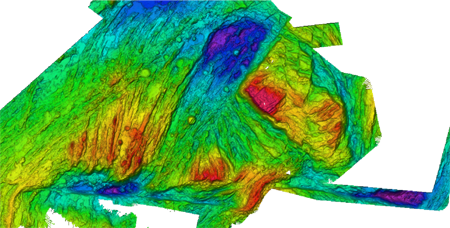The Effect of Fault Structure on Oceanic Transform Fault Seismicity
By:
Monica Wolfson Schwehr
University of New Hampshire
Click for a Live Broadcast.

Abstract
There is a global seismic moment deficit on mid-ocean ridge transform faults, and the largest earthquakes on these faults do not rupture the full fault area. The influence of physical fault structure, including step-overs in the fault trace, on the seismic behavior of the Discovery transform fault, East Pacific Rise, is investigated.
One year of microseismicity recorded during a 2008 ocean bottom seismograph deployment and 24 years of Mw >= 5.4 earthquakes obtained from the Global Centroid Moment Tensor catalog, are correlated with surface fault structure delineated from high-resolution multibeam bathymetry.
Each of the 15 5.4 <= Mw <= 6.0 earthquakes that occurred on Discovery between 1 January 1990 and 1 April 2014 was relocated into one of five distinct rupture patches. In general, microseismicity is reduced within the patches defined by the large, repeating earthquakes.
While the extent of the large rupture patches on DW correlates with physical features in the bathymetry, step-overs in the primary fault trace are not observed at patch boundaries, suggesting along-strike heterogeneity in fault zone properties controls the size and location of the large events. This talk will also investigate the effect of intra-transform spreading centers (ITSC) on the underlying thermal structure of the fault, and subsequently, the size of the largest expected earthquake.




